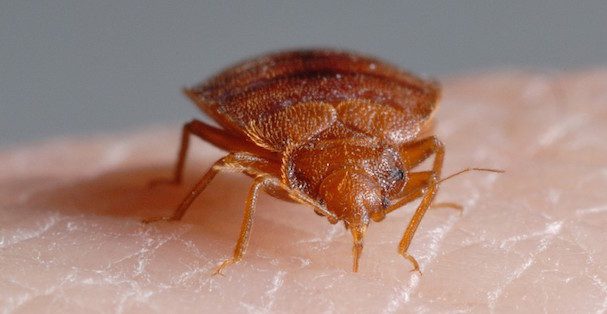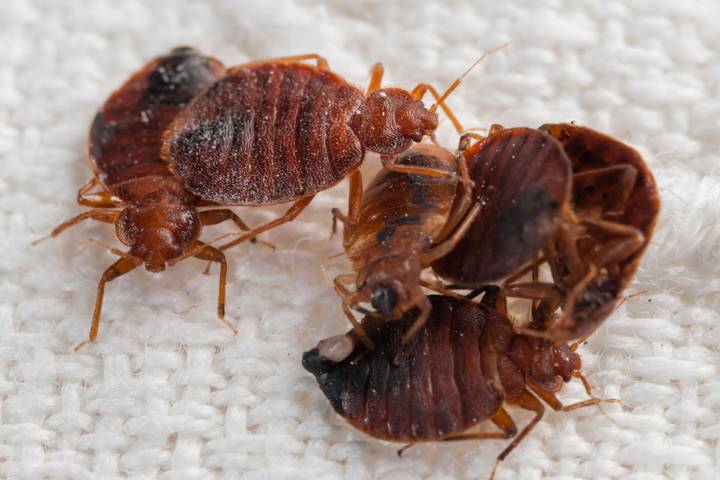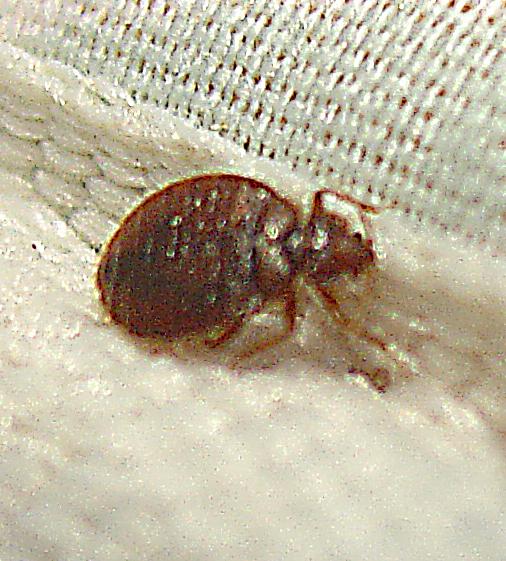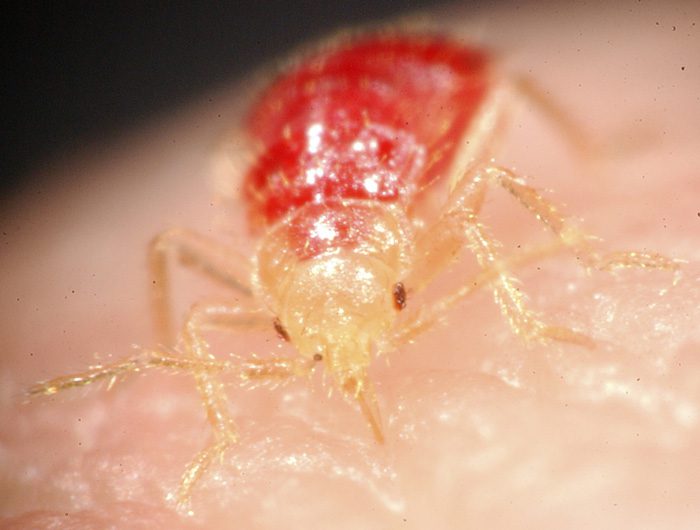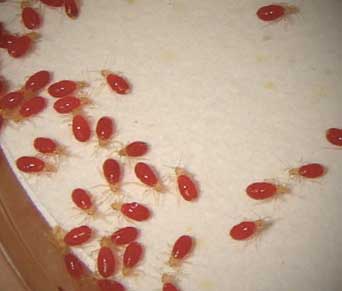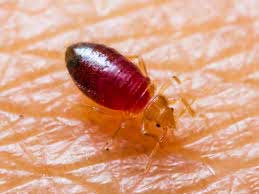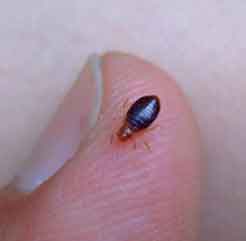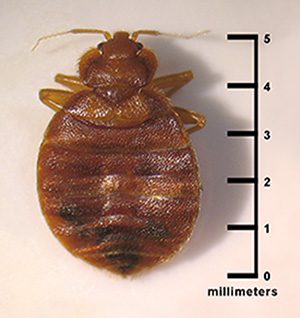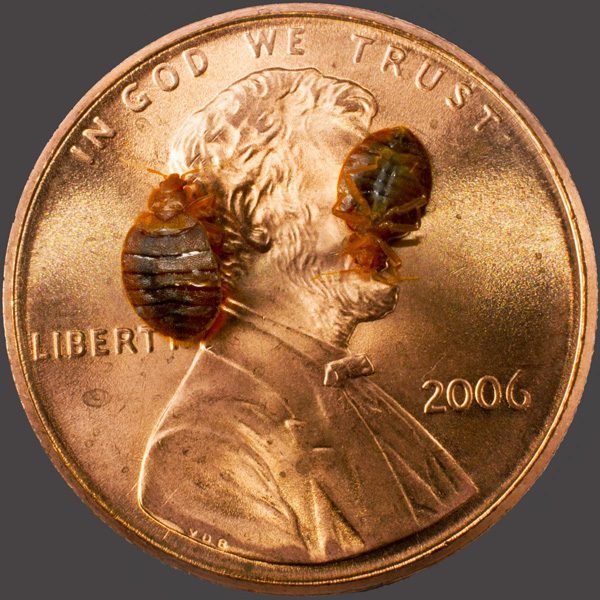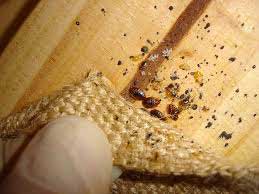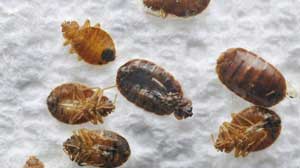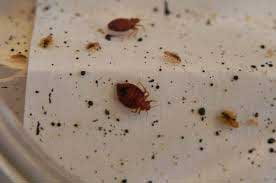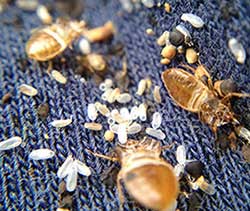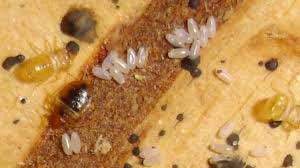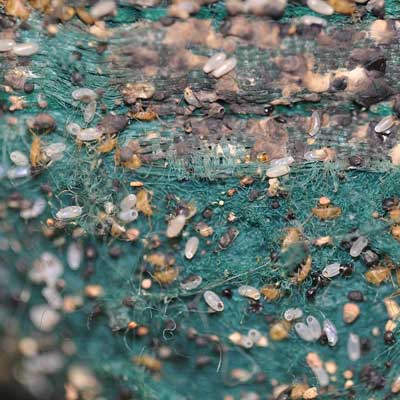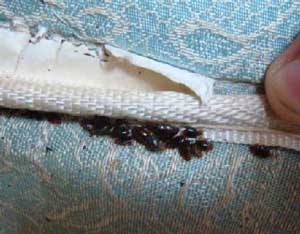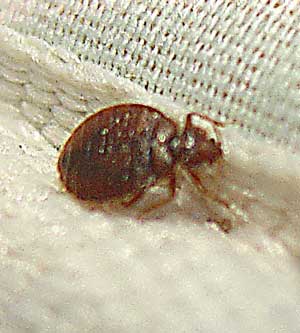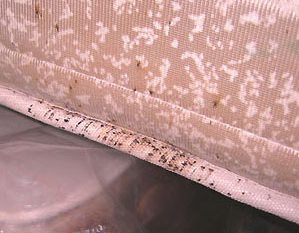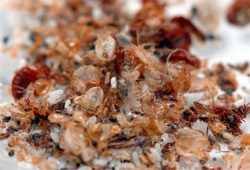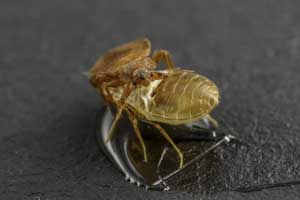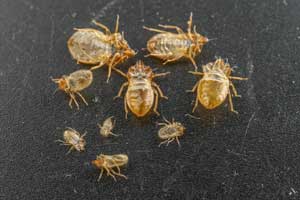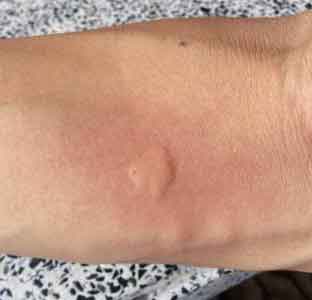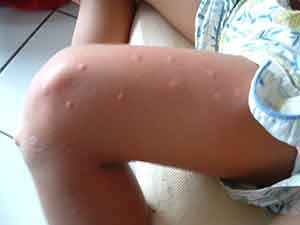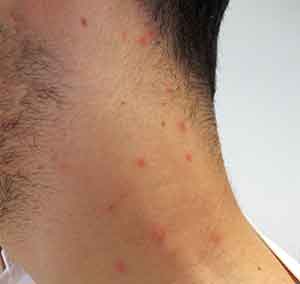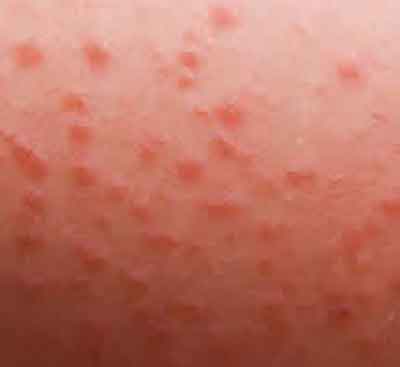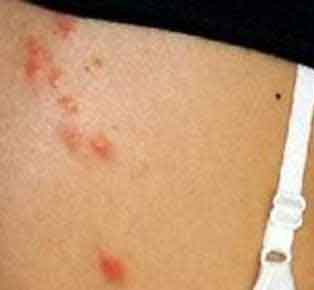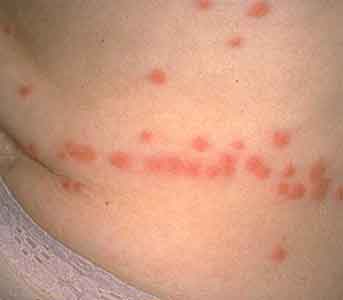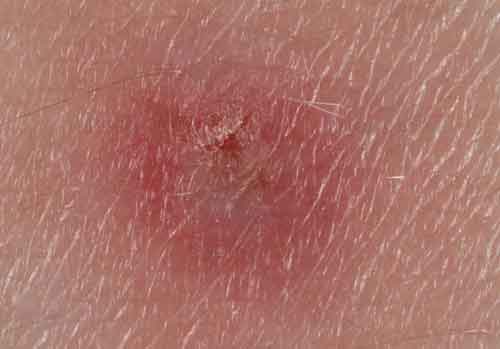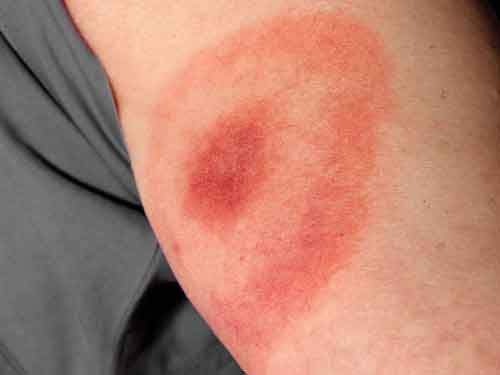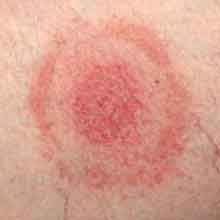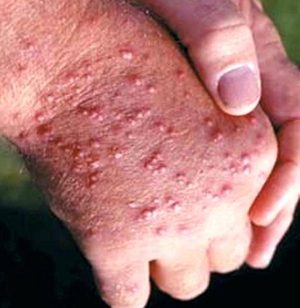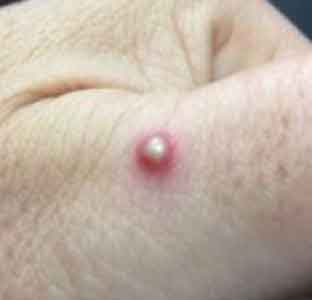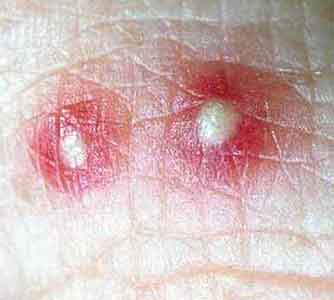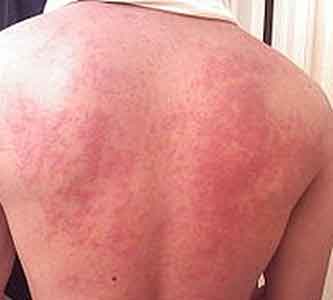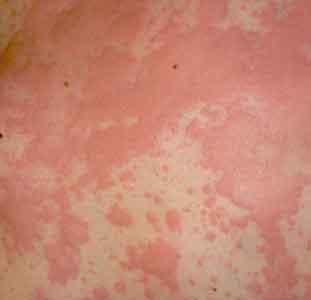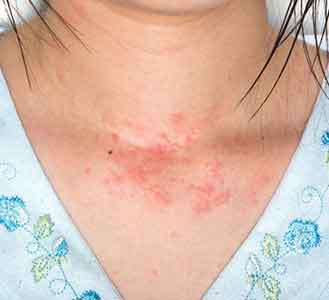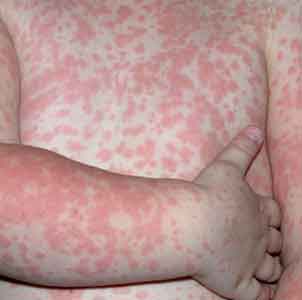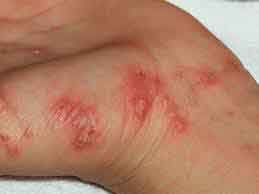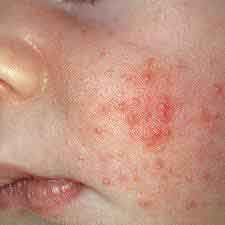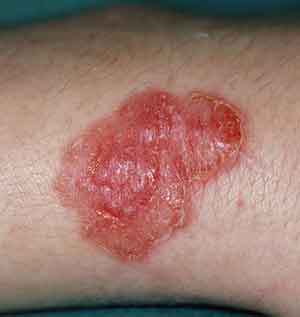The body reacts in many different ways when bitten by bed bugs. Below are some of the symptoms you may experience when bitten by bed bugs:
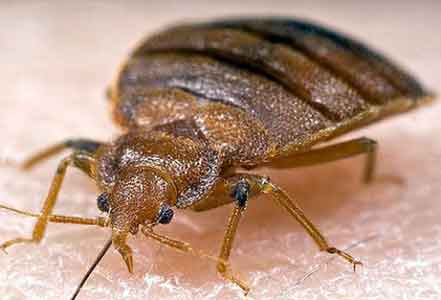
- Reddish bite mark that may become swollen with a dark-red center
- Bite marks arranged in leaner pattern or clustered within an area of the skin
- Hives or blisters at the bite site
- Video of Bed Bug Bite feeding Click here…
Biting insects target mainly parts of the body that are left exposed during sleep, such as the arms, legs, hands and face.
Listed below are pictures of bed bug bites and helpful tips that will help you identify bed bug.
Adult Bed Bugs
Bed bugs are also known by their scientific name Cimex lectularius. Adult bedbugs grow up to a length of 5mm to 7mm, while the size of the nymph is about 1.5mm. Both adult bedbugs and nymphs suck blood from human or animals. Nymphs have translucent body, while the adult ones have a reddish-brown color.
Bed Bug Nymph
Bed bugs lay eggs, which hatch into nymphs. Bed bug nymphs have a translucent body through which one can see the reddish color of their blood meal. Seeing a bed bug nymph on the bed sheet or any other part of the house is a clear indication of infestation, as a single adult bed bug can produce several bed bug nymphs.
Bed bug nymphs are more difficult to detect, because they are very tiny, with a length of 1.3mm to 4.5mm.
The actual size of bed bugs
Bed bug nymphs have a body size of about 0.18 inches, 4.5mm, which is slightly bigger than the size of a bed bug egg (0.90 inches, 2.5mm), and it is also smaller than an adult bed bug, which is about the size of an apple seed.
Bed bug bites on face
For people who react to bed bug bites, the first-place itchy red bite marks appear is usually on the shoulders or arms. The itching may be severe to the point that it could cause a person to scratch so much that they injure their skin, thereby putting them at the risk of developing a secondary skin infection.
Bed bug bites on children
You can ease the itching by rubbing calamine lotion, cool compresses or any other anti-itch cream. An oral administration of antihistamine also helps to ease the itching. These medications hasten the healing process, causing bite marks to clear up before two weeks of administration. Apply these medications on your kids, and advise them to avoid scratching the bites, to avoid any skin infection.
Bed bug bite marks on face, arms, neck or feet
Bed bugs can bite any area of the skin, especially those left exposed during night sleep, such as feet, face, neck, arms, etc. Unlike flea bites which also affects parts of the body covered with clothes, bed bug bite appear in clusters or in linear pattern, and only affect exposed body parts.
Dead Bed Bugs
The life cycle of a bed bug begins from the egg. An adult female bed bug lays milky-white colored eggs which hatch into bed bug nymphs. A single female bed bug can lay up to 500 eggs all though its lifetime, laying 1 to 5 eggs per day; they lay their eggs in the tight corners of cracks and crevices.
Bed Bug Eggs
Bed Bugs on Mattress
Bed bugs like to live very close to the place humans sleep. This makes it very easy for them to access food. They hide inside the seams of mattress, in box springs, headboard, bed frames and any other place they find comfortable near the bed.
What do Bed Bug skins look like?
Observing a bed bug skin around your bed or room is one of the clear indications of a massive bed bug infestation in your home. This shed skin is the molted exoskeleton of bed bugs indicating a potential high-level infestation. [Read more…]
Bed bug bites vs mosquito bites
Unlike bed bug bites that take a little time before they become visible, mosquito bites are almost always instantly visible. They appear as white welt with reddish, irregular boundaries. Almost everyone reacts to mosquito bites, but so many persons don’t show signs of bed bug bites.
Bed bug bites vs flea bites
Bed bug bites appear as tiny swollen itchy lumps on the hand, arms, neck and other parts of the body that are left exposed during the night. Though flea bites are also itchy, fleas prefer feeding on pets and other animals to feeding on humans.
Bed Bug Bites vs Tick Bites
Bed bugs and Ticks often share similarities notably their small size. But their breeding habits, harbourage, and their ability to spread diseases usually differentiate both of them. When it comes to combating bed bugs or tick problem, identifying the pest correctly is the first and most crucial step. [Read more…]

Deer Tick Bite 
Tick Bite 
Tick Bite on Arm
Bed bugs vs Ant bite
Most ants don’t bite; they sting, and when they do, they inject their victims with venom. Bed bugs and ants both cause varying kinds of allergic reactions, but that of ants may be sever, depending on the kind of ant, and the venom it injects. Ants, however, aren’t as parasitic as bed bugs because they don’t solely feed on blood.
Bed bug bites vs hives
:As you can see in the photo above, hives appear in zigzag pattern and are so conspicuous. Bed bug bites, on the other hand, may not be visible, while in some cases, they are mistaken to be flea, spider or mosquito bites. People sometimes also mistake bed bug bites for itchy rashes, chicken pox, hives or other skin conditions.
Bed bug bites vs rash
Due to the fact that it is difficult to detect bed bugs, people easily mistake bed bug bites for mosquito bites or bites form other insects. Sometimes, people also mistake them for rashes and other skin conditions.
Bedbugs vs Scabies
How to tell the difference between bed bugs and scabies. The fact that both bed bugs and scabies need a human host for their survival usually means they are portrayed to be the same entity, but that is usually a flawed judgment. Although both rely on humans for their survival, they both make use of humans rather differently. [Read more…]

